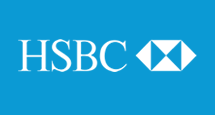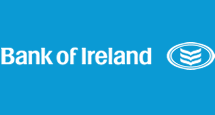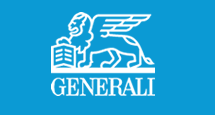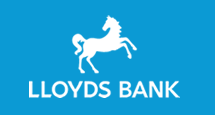Cabot FY 2018 Results – Modestly Improving But Not Enough To Go Long
03 March 2019
Cabot FY 2018 Results – Modestly Improving But Not Enough To Go Long
Rupesh Tailor, Everest Research, 1 March 2019
Summary
- We view Cabot's 2018 performance as modestly improving (both financially and in terms of business profile) and, in our opinion, stronger than Arrow Global's. Cabot's all-in net IRR (i.e. after collection activity costs and an allocation for central costs) on its in-force portfolios improved on our estimates to 12% at FY 2018 (v 11% at FY 2017 and 11% at H1 2018) which remains above Cabot's average cost of debt at 5.7%, albeit we project the all-in net IRR to decline to 9% in 2020 as older, higher IRR portfolios decay and are replaced with lower IRR portfolios and Cabot has a relatively short funding profile with debt maturities starting in 2021 - see our recent note for our methodology. By comparison, Arrow's all-in net IRR on in-force portfolios was 3% at end 2018 on our estimates and already below its cost of debt at 3.9%. We believe Cabot has a stronger chance than Arrow of benefitting from an improving debt purchasing environment and improving its trajectory of all-in net in-force IRR relative to cost of debt
- Whilst our own estimate of Cabot's 2018 steady state free cash flow (at £20m, c. 1% of net debt) comes out lower than the company's estimate at £70m (4.9% of net debt), both estimates improved on the prior year (2017 £5m / 0% on our estimates and £58m / 4.5% on the company's). Whilst our 1% of net debt estimate is the same as for Arrow in 2018, we view Cabot's sustainability of this as greater given our projected net IRR trajectories for the two companies based on decay of their existing portfolios
- Recommendation - We maintain our avoid recommendation on Cabot senior secured bonds, initiated on 11/1/19. Whilst we view the company as having more scope than Arrow and Lowell to improve its net lifetime cash generation, our base and stress case bond valuations still show substantial downside (see our note), which also deter us from a pair trade versus Arrow in our model portfolio. With the Cabot (ECPG) senior secured £ 7.5% 2023 trading at 97.70 (YTW 8.1%, Z+684) vs Arrow (ARWLN) senior secured £ 5.125% 2024 at 96.98 (YTW 5.8%, Z+445), we see Cabot as a substantially better proposition on relative value vs Arrow. Fundamentally we view Cabot as a stronger business than Arrow and should not be wider
Key Observations
- Key observation #1 - Cabot reported a strong FY 2018 steady state free cash flow (SS FCF) of £70m (c. 5% of net debt) based off an average 120 month Estimated Remaining Collections (ERC) replacement rate of £178m. Adjusting for replacement of collections on 2018 portfolio purchases received in 2018 (£23m on our estimates), we estimate 2018 SS FCF at £20m (1% of net debt) compared to £5m (0% of net debt) in 2017 on our preferred methodology explained in our note
- In our note we further show that one year SS FCF (aggregated over time for a static pool of portfolios) bears very little resemblance to the net lifetime cash generation of that pool owing to the possibility whereby even portfolios that would be loss-making on a lifetime basis relative to price paid (even before collection activity costs and a share of central costs) will be Adj EBITDA and SS FCF positive early in their life as long as the cost-to-collect ratio is < 100%
- Our preferred method for estimating (the still overstated) SS FCF essentially operates as follows for 2018. We see 2018 actual FCF excluding M&A, one-off expenses and change in working capital and before dividends and portfolio purchases at £236m. We estimate the 2018 120 month ERC replacement rate as [end 2018 Year 1 ERC - end 2018 Year 11 ERC + 2018 collections taken on portfolios purchased in 2018] divided by a 120m gross money multiple of 1.83x (in line with Cabot's stated purchasing multiple in 2018 including its secured portfolio purchases). We estimate the average 120m ERC replacement rate (£216m) by averaging the end 2018 ERC replacement rate (£215m) with the end 2017 ERC replacement rate (£217m), both calculated using the same methodology. Our 2018 SS FCF estimate is then the £236m actual FCF excluding M&A, one-off expenses and change in working capital before dividends and portfolio purchases less that £216m 120m average ERC replacement rate, giving £20m versus Cabot's own estimate of £70m
- Key observation # 2 - Our estimate of Cabot's all-in net IRR (i.e. after collection activity costs and an allocation for central costs) on its in-force portfolios improved to 12% at 2018 from 11% at 2017 and 11% at H1 2018 (see our recent note for details). This is above Cabot's weighted average cost of debt at 5.7%, albeit Cabot's debt maturity profile is relatively short and we project the all-in net in-force IRR to decline to 9% in 2020 should current purchasing economics persist and purchasing volumes decline somewhat as guided by Cabot. We think it is encouraging, however, that Cabot has been able to arrest the steep decline in all-in net IRR which had ranged from 16% to 18% on our estimates over 2011 - 2015 before dropping to 12% in 2016
- Key observation #3 - Whilst we generally find it hard to see evidence of positive operational leverage across the credit management services sectors as the major firms have grown (see our note), we think there are signs of this emerging at Cabot. Cabot's Adj EBITDA / cash income margin fell only 2pp to 63.5% in 2018 from 65.5% in 2017 vs the -4pp guidance given at the time of the Wescot (lower margin servicing business) acquisition in late 2017
- Cabot attributed this better-than-guided margin performance to "operational efficiency measures", which we see coming through the debt purchasing business' cost-to-collect ratio falling from c. 24% in 2017 to 21% in 2018 whilst central costs / cash income across the group fell from 10.6% in 2017 to 10.1% in 2018
- Key observation #4 - Cabot guided that portfolio purchasing volume in 2019 would likely be lower than the £333m in 2018 and £322m in 2017 due to Encore (Cabot's US-listed parent) wanting to allocate more capital to the US where it sees an even more favourable IRR environment. We view this as positive for our valuation of Cabot. Our base case in-force and new business valuation model places a negative value of c. £600m on Cabot's "new business value", i.e. on its future purchasing activity plus future 3PC contracts which broadly reflects that we see current purchasing economics as value destroying and that less purchasing is better. Whilst our base case did already assume purchasing slows to £300m in 2019, £250m in 2020 and £200m in 2021, we view it as marginally positive that Cabot itself is now expecting purchasing to slow. The more aggressively this occurs, the more scope we see for Cabot's valuation to uplift towards its in-force value which fully covers its debt (just). This is different to the situation at Arrow where our base case in-force value is negative, i.e. debt is impaired based on the portfolios already owned and 3PC contracts already in place given Arrow's cost structure
- Whilst the guidance that portfolio purchasing volume in 2019 would likely be lower than in 2018 and 2017 sits oddly with Cabot's expectations of improving net IRRs available (due to increased cost of funding across the industry and capital constraints for some) and Cabot's expectations that UK consumer credit defaults are likely to double in the coming years given outstanding consumer credit is again north of £200bn as in 2008, management explained that they would still benefit from improved purchasing opportunities by investing with co-investors. This would still allow Cabot to deleverage as per its targets even if purchasing opportunities improve
- Key observation #5 - Cabot sees a no-deal Brexit as "very manageable". Compared to 2008, Cabot sees its increased collections from affordable long-term payment plans (rather than one-off settlements) as improving the resilience of its ERC to a downturn. We explore actual downturn data (cost/income ratios, portfolio revaluations, actual : estimated collections, collections, Adj EBITDA and leverage) from the financial crisis for each of the debt purchasers in our recent note as well as stressing our proprietary ERC model for a reversion of breakage rates and new payer rates to the levels of 2011-2013 to assess downside implications for each firm. Whilst the major credit management services firms have talked much about their recession-resilience, volunteering of hard data has been less forthcoming in our opinion and we view it as not widely appreciated that Cabot underwent a debt restructuring in 2011 (see our note) as part of its acquisition by Anacap (prior to being sold to JC Flowers and Encore)
- Key observation #6 - Whilst Cabot and others in the industry have attributed, in part, the fall in their GMMs (and increase in price paid for portfolios) over time to changing mix within their purchases towards more paying / fresher / semi-performing portfolio, as per our note, we struggle to see a consistent trend up in paying portfolios within the purchasing mix for firms who have more consistently provided this information (Cabot and Arrow). Paying portfolios comprised 38% of Cabot's overall 2018 portfolio purchases (the figure was higher at 61% for the UK) whilst in 2017 they were 64% and had been as high as 76% in 2013 and 89% in 2012 (see chart below)
- Key observation #7 - We estimate Cabot's 2018 portfolio revaluation (excluding roll-in effect) at -1% of average portfolio carrying value. Whilst we would not want to see large negative revaluations, we like to see companies reporting a combination of actual : estimated collections > 100% and negligible portfolio or ERC revaluations. This combination means that firms are both outperforming on collections and not extrapolating this collections outperformance beyond the current year in their ERC assumptions. The best firm on this front has been Intrum. Whilst Cabot has experienced modest negative portfolio revaluations on our estimates over 2014 - 2018, given that Cabot has been outperforming its collection estimates we prefer this to the situation at Arrow and Lowell where, although both firms have been outperforming on collections estimates, their ERC and portfolio revaluations have been significantly positive on our estimates, i.e. they are extrapolating current year outperformance to a large extent across the ERC horizon, leaving them more exposed to reversals should the cycle turn (see our note). For instance, Arrow's 2018 portfolio revaluation was +5% of average portfolio carrying value on our estimates and +3% on the company's estimates, broadly matching the 4% cumulative collections outperformance, i.e. Arrow in 2018 broadly extrapolated its full current year collections outperformance across the ERC horizon
- Key observation #8 - Cabot has relatively short debt maturities (c. the first £360m of senior secured bonds fall due in 2021) and limited ability (just under £100m on our estimates) to incur further securitisation funding without paying down senior secured debt. Our note looks at carve-outs to the additional indebtedness incurrence covenants at each of the firms. Cabot's carve-out is 20% of 84 month ERC which comes out to c. £448m at 2018 vs outstanding securitisation debt of £350m. Cabot does, however, still have £195m of liquidity under its RCF and unrestricted cash combined. Encore has stated previously, post its buyout of the Cabot minorities in 2018, that it intends for Cabot to remain an independently financing business but we believe, given the low leverage at Encore ex-Cabot, that Encore would have capacity to raise debt and downstream to Cabot. More positively from a liquidity perspective, Cabot's forward flow commitments remain low and have fallen (£43m going into 2019 v £136m going into 2018)
- Given the current rebound in bond prices in the European debt purchasing sector, we would expect Intrum and Cabot to be the first to attempt to access the high yield bond market (given their relatively near term debt maturities) should the rally continue
- Key observation #9 - Cabot is targeting net debt / Adj EBITDA of 3.5 - 4.0x by 2019 and 3.0 - 3.5x by 2021. Leverage reduced from 4.2x at 2017 to 4.1x at 2018
- Key observation #10 - Cabot's 2018 change in 120m ERC divided by its change in portfolio carrying value comes to c. 1.8x, broadly in line with its 1.83x 120m GMM including secured portfolio purchases. We take comfort in the accuracy of the reported purchasing GMM from this. We observed a similar consistency at Intrum but much lower "remaining" GMMs at Arrow and Hoist than these latter firms' stated purchasing GMMs
- Recommendation - We maintain our avoid recommendation on Cabot senior secured bonds, initiated on 11/1/19. Whilst we view the company as having more scope than Arrow and Lowell to improve its net lifetime cash generation, our base and stress case bond valuations still show substantial downside (see our note), which also deter us from a pair trade versus Arrow in our model portfolio. With the Cabot (ECPG) senior secured £ 7.5% 2023 trading at 97.70 (YTW 8.1%, Z+684) vs Arrow (ARWLN) senior secured £ 5.125% 2024 at 96.98 (YTW 5.8%, Z+445), we see Cabot as a substantially better proposition on relative value vs Arrow. Fundamentally we view Cabot as a stronger business than Arrow and should not be wider
Results Highlights
| METRIC (£ M) | 2018 | 2017 | % CHANGE | COMMENT |
| Collections | 454 | 408 | +11% |
|
| Revenue | 393 | 315 | +25% |
|
| Adj EBITDA | 350 | 295 | +18% |
|
| Steady State (SS) FCF | 70 | 58 | +21% |
|
| Net debt / Adj EBITDA | 4.1x | 4.2x | -0.1x | |
| Portfolio carrying value | 1,314 | 1,143 | +15% | |
| 120m ERC | 2,679 | 2,370 | +13% | |
| 120m gross money multiple on new portfolio purchases | 1.8x | 1.8x | +0.0x |
|
Contact Rupesh Tailor at Everest Research to discuss: rupesh.tailor@everestresearch.co.uk
Everest Research - Deep dive high yield research, distressed debt research and independent equity research
Categories
Recent Blogs
Selecta. Going Long SSNs At 95.375 (7.2% YTW) & Selling 5y CDS At 474bps
Selecta. Going Long SSNs At 95.375 (7.2% YTW) & Selling 5y CDS At 474bps Massimiliano Zanetti Bottarelli & Rupesh Tailor, Everest Research, 3 March 2020 We published a deep dive last week on Selecta, the European unattended self-service retail market leader, and now see an attractive opportunity to go long risk via both the Senior Secured Notes (SSNs) and 5 …
03 March 2020
Read
OHL. Take Profits Following FY 19 Results
OHL. Take Profits Following FY 19 Results James Moylan & Rupesh Tailor, Everest Research, 28 February 2020 FY 19 results saw negative valuation adjustments on key assets we expect to be sold (Old War Office, London) and alternatively monetised (Canelejas, Madrid) and ongoing uncertainty on the ownership structure. Whilst we remain constructive on OHL’s turnaround (of which there were positive …
28 February 2020
Read
Aldesa. China Railway To Take 75% Stake. CoC Put At 101
Aldesa. China Railway To Take 75% Stake. CoC Put At 101. Buy James Moylan & Rupesh Tailor, Everest Research, 27 December 2019 Aldesa announced late yesterday that, on 25/12/19, it “entered into an investment agreement with CRCC International Investment Group (CRCCII), a wholly-owned subsidiary of China Railway Construction Corporation Limited (CRCC)”, one of the largest construction companies in the world. …
27 December 2019
Read
Pro-Gest – Deadline To File Counter-Arguments On Mantua Plant Increased EIA Authorization Extended. Buy
Pro-Gest – Deadline To File Counter-Arguments On Mantua Plant Increased EIA Authorization Extended. Buy Massimiliano Zanetti Bottarelli & Rupesh Tailor, Everest Research, 30 October 2019 According to the local newspaper “La Gazzetta di Mantova” (see here), Pro-Gest has been granted a further extension by the Province of Mantua to file its counter-arguments to the rejection of its application for an …






